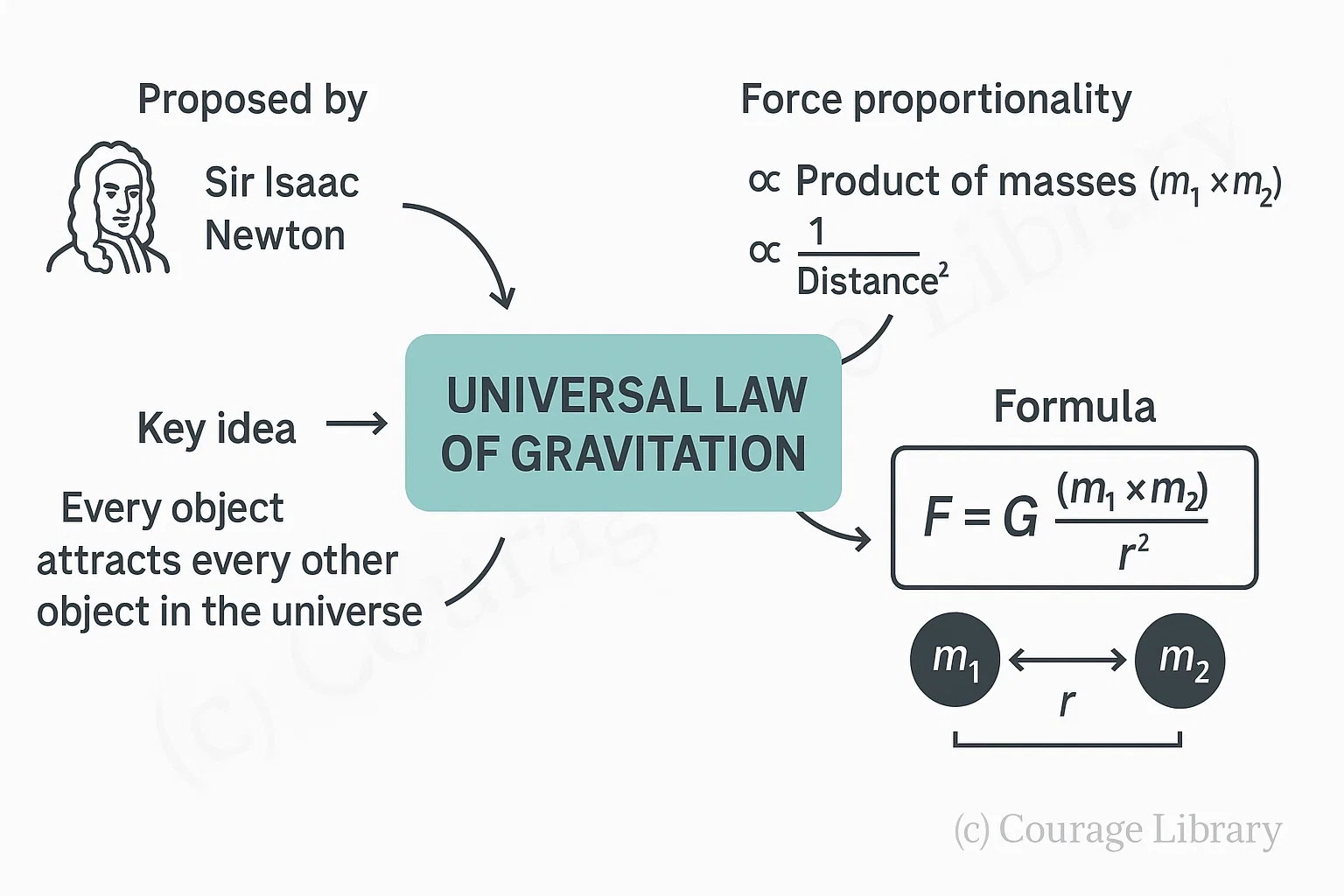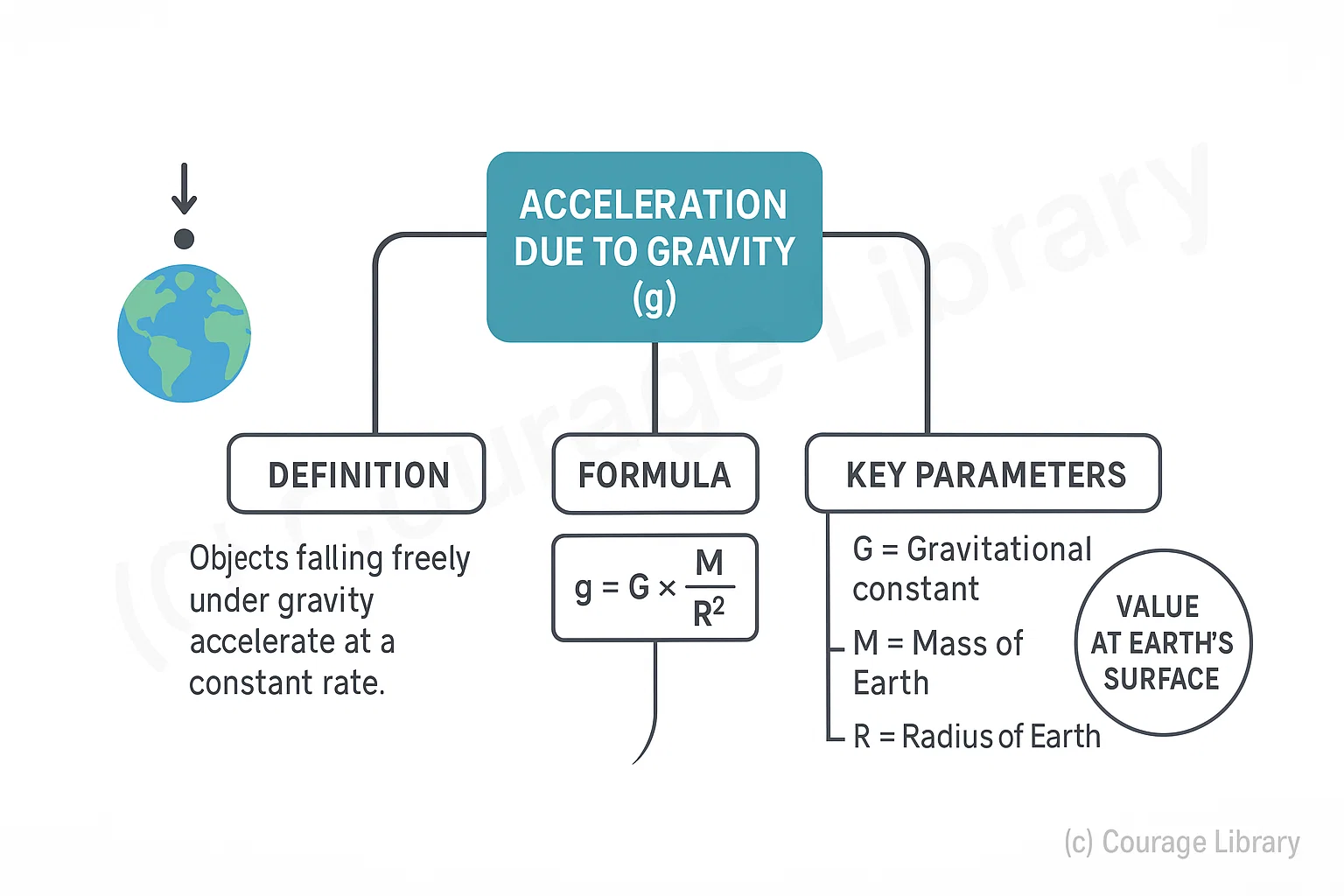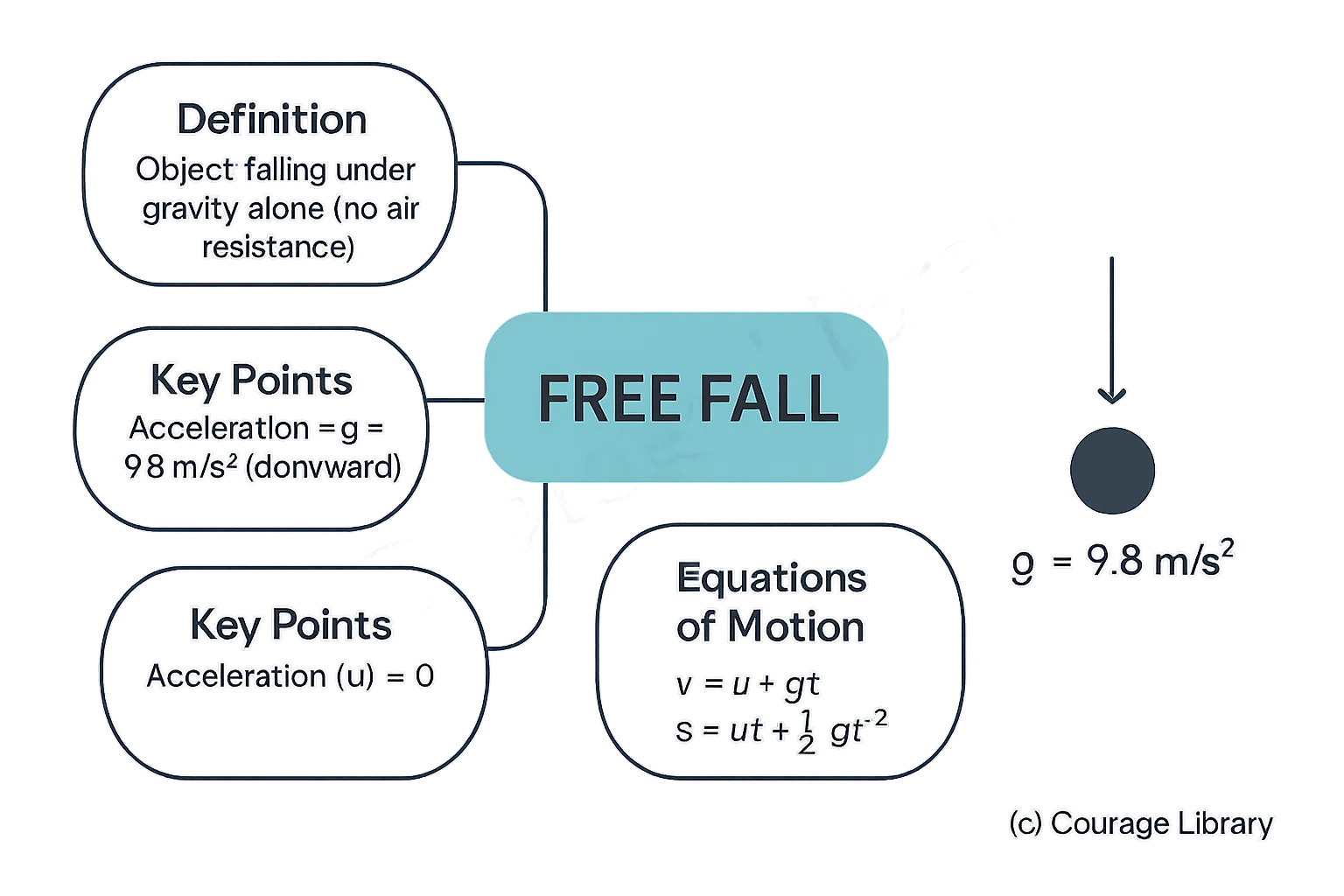SSC CGL - Detailed Guide 2025
Self-Paced Course

Gravitation
Reference: Lucent GK, NCERT Class 6–12
1. Universal Law of Gravitation
Proposed by Sir Isaac Newton.
Every object in the universe attracts every other object with a force that is:
- Directly proportional to the product of their masses.
- Inversely proportional to the square of the distance between them.
F = G × (m₁ × m₂) / r²

| Symbol | Meaning | SI Unit |
|---|---|---|
| F | Gravitational force | newton (N) |
| G | Universal Gravitational Constant | 6.674 × 10⁻¹¹ Nm²/kg² |
| m₁, m₂ | Masses of the two objects | kilograms (kg) |
| r | Distance between objects | meters (m) |
- G is a universal constant, same throughout the universe.
- This law explains motion of planets, tides, satellite orbits, etc.

2. Acceleration due to Gravity (g)
When objects fall freely under gravity, they accelerate at a constant rate called acceleration due to gravity.
g = G × (M / R²)
| Quantity | Symbol | Value on Earth | Unit |
|---|---|---|---|
| Acceleration due to gravity | g | 9.8 | m/s² |
| Mass of Earth | M | 5.972 × 10²⁴ | kg |
| Radius of Earth | R | 6.371 × 10⁶ | m |
g decreases:
- With altitude
- With depth (toward Earth's center)
- At equator compared to poles
- g = 0 at the center of Earth
3. Mass vs. Weight
| Factor | Mass | Weight |
|---|---|---|
| Definition | Amount of matter in body | Force with which Earth attracts |
| Symbol | m | W |
| Formula | m = Density × Volume (m = ρV) ; m = Weight / Gravitational Acceleration(m = W/g) ; m = Force / Acceleration (m = F/a) ; m = Energy / (Speed of Light)² (m = E/c²) | W = m × g |
| Nature | Scalar | Vector |
| Unit | kg | newton (N) |
| Constant? | Yes (anywhere in universe) | No (depends on gravity) |
| Measured by | Beam balance | Spring balance |
Note: Weight is zero in space (g = 0), but mass remains constant.
4. Free Fall
When an object falls under the influence of gravity alone (no air resistance), it is in free fall.
Equations of motion apply with:
- Initial velocity (u) = 0
- Acceleration = g = 9.8 m/s² (downward)

| Equation | Description |
|---|---|
| v = gt | Velocity after time t |
| s = ½gt² | Distance fallen in time t |
| v² = 2gs | Velocity after falling a distance s |
Note: In vacuum, all objects fall at same rate regardless of mass.
Start Your SSC CGL Journey Now!
Join Courage Library to experience disciplined study and expert support.
Be a Couragian!